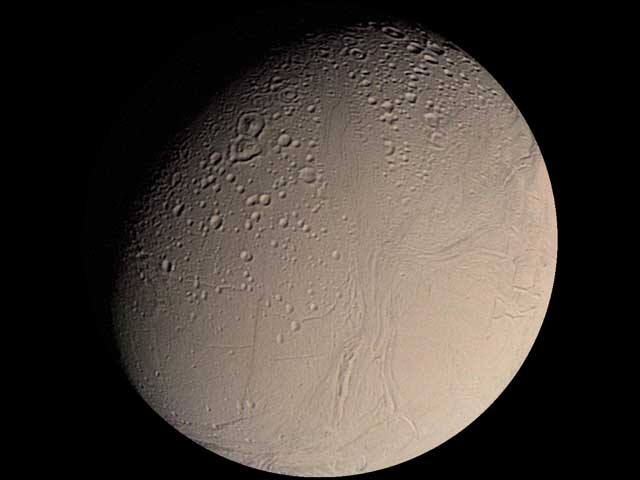Enceladus
Enceladus is an ice covered moon, 505 km across. It is one of the most reflective bodies in the solar system - 90 percent of the light it receives is sent back into space - the same reflectivity as fresh fallen snow.
Surface features include:
- Sinuous mountain ridges 1,000 to 2,000 m high.
- Some broad, extensively re-surfaced regions.
- Linear cracks, possibly caused by sideways fault motion like that of the San Andreas fault.
- Surfaces formed by separation of icy plates along cracks,
- Possibly active ice volcanoes
Ice particles from Saturn's E-ring, may still be falling on Enceladus. The particles in the E-ring may have been ejected by ice volcanoes on Enceladus.
The images were taken by the Voyager and Cassini missions.
April 2005

1 of 5
Source: NASA Planetary Photo Journal